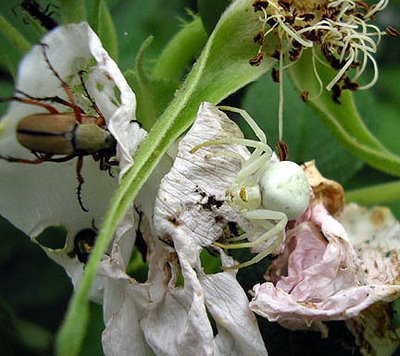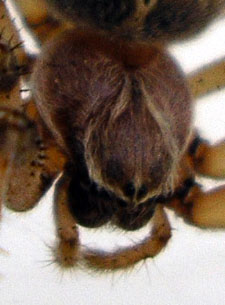The northern catalpa is a popular ornamental in my area, far from its home in the Carolinian forest. It grows well, blooms spectacularly, produces a lovely long seed pod, and has big, beautiful leaves. Its only drawback is that it's not in the least frost-tolerant. At the first real frost in the fall those spectacular big leaves turn black and limp--pretty sad looking.
Northern catalpa ( Catalpa speciosa ) is a member of the Bignoniaceae family. It is native to the Carolinian forest west of the Mississippi and south of the Great Lakes. It is a strangely tropical looking tree. The leaves are large and cordate (heart-shaped), and alternately arranged. ... The flower is tubular and asymmetric, and it is white with thin yellow and purple longitudinal stripes. The spectacular trumpet-vine like flower blooms spangle the tree after the leaves have unfurled.

The article quoted maintains that the leaves of this tree stay green or turn yellow in fall, and stay on the tree until very late--but this must be in its southern home.
There are three catalpas, all the same age (about fourteen years old), in the yard. One has had a very hard life--its top has been broken twice, and while it has struggled back each time, it hasn't grown much. The one closest to the house is large, seven or eight metres, and quite magnificent. The third is a little further from the house, and possibly in a drier spot than the big one. It's about half the size, though its flowers are almost twice the size of the flowers on the larger tree, something I just noticed today.
The catalpas are in bloom this week all over the area. In the yard the smaller one is past its prime, and buds are just opening on the big one.

This is key to the success of this tree so far north. It waits until all danger of frost is past (at least almost all) before it leafs out, and then flowers. The interesting question is: how does it manage to wait?
There is another tree in the yard that does not wait: the shagbark hickory. There are two, around the same age as the catalpas, they are about 50 centimetres high (currently lost in the tall grass). Reputed to be hardy to this zone (5, more or less--see What's a Zone?), this tree is also not at all frost-tolerant, and yet it insists on leafing out first every spring. It freezes, leafs out again (occasionally freezes again), and then, resources spent, it basically rests for the rest of the growing season. The linked article warns nut farmers, "Grown from seed, it can take 10 or more years for hickory trees to start to bear." In this case, perhaps thirty or forty years.
I had a theory that the shagbark hickories behave in this foolhardy way because they were born in Zone 6, and spent their first year there, and can't understand the ways of Zone 5. I thought that this had to do with an internal clock of some kind. Back in May I was down in Prince Edward County for a couple of weeks, in the very place from which the hickories came as seedlings. The yard there is home to a huge specimen of this tree, and the woods below the house is about half hickory, half maple. And I noticed something very interesting: the shagbark hickories leafed out later than anything else, not earlier as they do here. Now it could be that the specimens here are defective in some way, though odd that they'd be defective in the exact same way (but not impossible, of course). But I speculate that this has to do with the different style of climate in Thomasburg compared to Prince Edward County. Prince Edward is practically an island in Lake Ontario, while Thomasburg is 25-30 kilometres north of its shores. It's colder in the winter here than it is there, the last frost is later in the spring, but the temperature variations in the spring are much greater here, hotter in the daytime, colder at night. And I think it could be those hot daytimes that fool the hickories, while the northern catalpa waits for another kind of sign before it accepts that spring is really here.






































